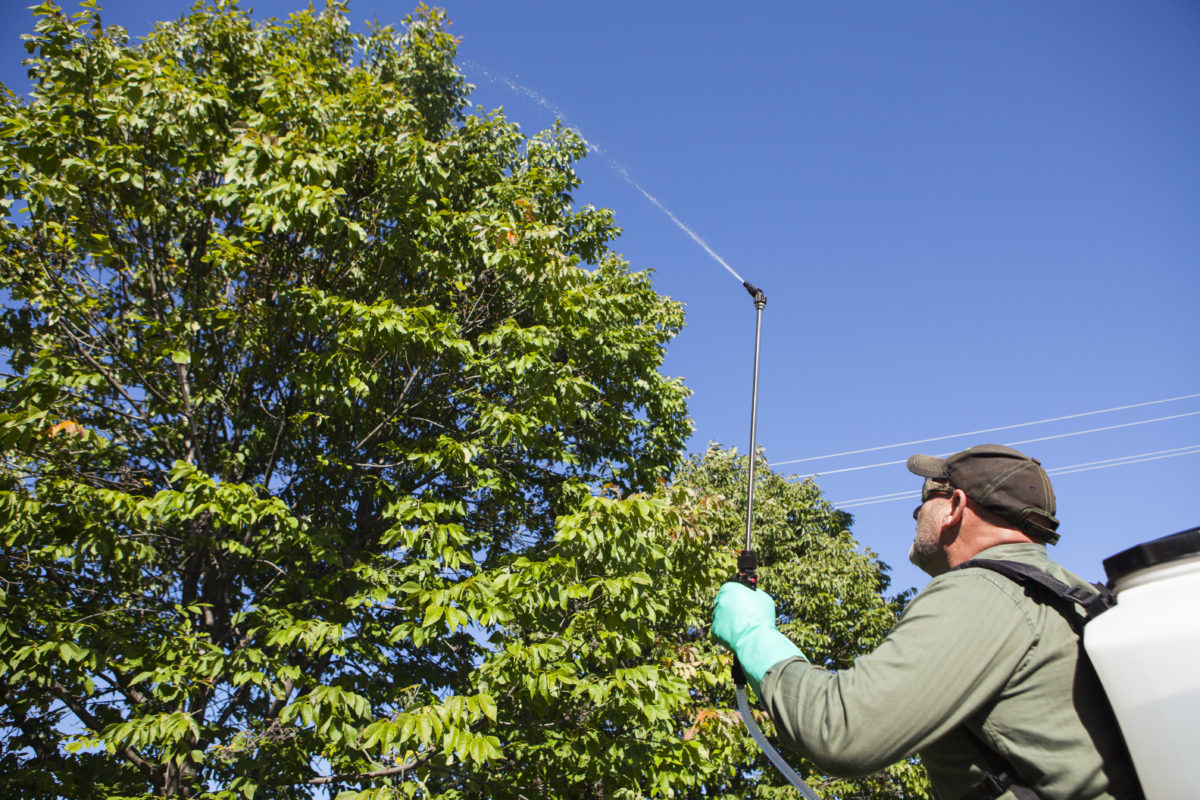“Reading the label is the most valuable few minutes you can spend in pest control.”
When it comes to using pesticides there is one vital rule—always read the label.
“Reading the label is the most valuable few minutes you can spend in pest control,” said Larry Perotti, a Ewing education instructor on turf and ornamental care, pesticide safety and Integrated Pest Management (IPM).
From how to properly store and use the product, to first-aid and cleaning up spills, the label is your guide for using insecticides, herbicides, rodenticides, fungicides, plant growth regulators and other pesticide products.
It’s not exaggerating to say that improper pesticide use can cause serious damages, illness and even death, so it’s vital to read the label for each product you use.
Tip 1: Even if you’ve used it before, re-read the label.
One thing many applicators may not realize is that the labels for products can change over time— some companies may even update their formulations each year.
“You must be aware rates can change and the label directions change,” said Perotti.
Always review label before each use. 
Tip 2: Make sure you know the law.
Some products are Restricted Use Pesticides and this will be noted on the label. Only certificated pesticide applicators, or those under the direct supervision of a certified applicator, can apply these because they can be very dangerous if misused.
Most states also require commercial pesticide applicators to be licensed or certified when applying non-restricted use pesticides too, so make sure you know and understand your local pesticide laws.
Tip 3: Pay attention to signal words and hazard warnings. 
It’s important to look for these signal words on the label to alert you to the product’s toxicity level:
- DANGER: This signal means the product is highly toxic is eaten or inhaled and can cause severe eye damage or skin irritation.
- WARNING: This signal means the product is moderately toxic if eaten or inhaled; causes moderate eye or skin irritation.
- CAUTION: This product is slightly toxic if eaten or inhaled or can cause slight eye or skin irritation.
Low-toxicity products may not include these signal words, but can still be harmful in high doses, so be sure to always—you guessed it—read the label for proper use.
The label will also include first aid procedures to take if someone does inhale, ingest or get exposed to the product.
Finally, pay attention to the hazards the product poses to humans, domestic animals and the environment noted on the label to keep other people, animals and the environment safe.
Tip 4: Wear the right gear.
 Under the Precautionary Statements section of the label, you’ll also find instructions for Personal Protective Equipment (PPE) you’ll need.
Under the Precautionary Statements section of the label, you’ll also find instructions for Personal Protective Equipment (PPE) you’ll need.
“The label will tell you what type of stuff to wear,” Perotti said.
This can include protective items such as long sleeves, pants, coveralls, liquid-proof apron, neoprene or rubber gloves, goggles, face shields, and even respirators.
It’s also a good idea to read this section before purchasing the pesticide, so you’ll know what gear you might need to buy to apply it.
Tip 5: Follow the directions for use and disposal.
The Directions for Use on the label will explain how to safely and effectively use the product, including:
- Where and when to use it
- Which pests to use it for
- How much to use and how to apply it
Read the directions carefully and follow them!
It might seem obvious, but never pour excess pesticides into food or drink containers to save or use pesticides. Sadly, this mistake happens with dangerous consequences.
A Tip N' Measure container however can help you measure out the right amount needed for each application. This video shows how.
Finally, always follow proper cleaning and disposal directions, which are also on the label.
Tip 6: Seriously, read the label!
The label is the law.
Read it, re-read it and follow the label every time you use a pesticide to keep yourself and others safe.




